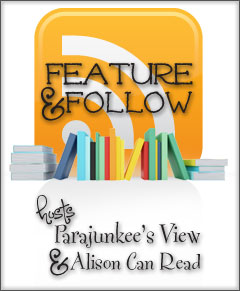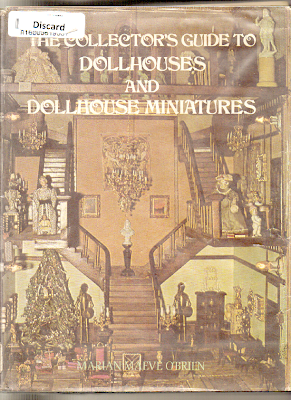Title: Beneath the Shadows
Author: Sara Foster
Publisher: St. Martin’s Press
Imprint: Minotaur Books
Pub. Date: June 05, 2012
ISBN: 97803112643362
The plot summary from St. Martin’s:
“When Grace’s husband, Adam,
inherits an isolated North Yorkshire cottage, they leave the bustle of
London behind to try a new life. A week later, Adam vanishes without a trace,
leaving their baby daughter, Millie, in her stroller on the doorstep. The
following year, Grace returns to the tiny village on the untamed heath.
Everyone—the police, her parents, even her best friend and younger sister—is
convinced that Adam left her. But Grace, unable to let go of her memories of
their love and life together, cannot accept this explanation. . . As
Grace hunts through forgotten corners of the cottage searching for clues, and
digs deeper into the lives of the locals, strange dreams begin to haunt her. . . Only
as snowfall threatens to cut her and Millie off from the rest of the world does
Grace make a terrible discovery. She has been looking in the wrong place for
answers all along, and she and her daughter will be in terrible danger if she
cannot get them away in time.”
False advertising in a publisher’s marketing copy can create significant problems for the reader if the copy is read before
the book. Though I suspect that the inaccuracy was a well-intentioned attempt
to convey the essence of Beneath the
Shadows, I struggled for many pages to find the novel that St. Martin’s
described as “a thrilling gothic debut that evokes Daphne Du Maurier's Rebecca and Arthur Conan Doyle's Hound of the Baskervilles.” If you’re
looking for Gothic thrills, this is not your novel. The plot and prose are far too reserved to
attract readers in search of a mystery with psychological sturm un drang. It’s reminiscent
of Rebecca only in that the main
character happens to be reading Rebecca in
several scenes.
When I moved beyond the publisher’s
description that initially piqued my interest, I found myself quickly warming to
a very different novel. On her website, Australian writer Sara
Foster shares a much more accurate description of her second novel: “It is
being likened to books by Sophie Hannah and Rosamund Lupton.” In its quiet way,
Beneath the Shadows sneaks up on the
reader, gathering momentum from its slow beginning to increase the pace and
tension until the very end.
The
beautifully depicted setting is practically a character in its own right. Grace
is immediately engaging, though her character is not greatly fleshed out or
distinctive. We understand Grace only in relation to others, despite the first
person narration. Though Grace is not a particularly complex character, she is
more than likeable enough to compel the reader to follow her story to its not
unexpected conclusion.
Problematically,
a number of sub plots and characters are brought to the forefront, only to fade
into insignificance. It was unclear to me why the best friend who’s been in
unrequited love with Grace forever was part of the story. Grace’s numerous
fruitless calls to a police detective that end with the detective not taking
her concerns very seriously didn’t serve to ratchet up the tension or depict
Grace as isolated. The natural landscape which thwarts Grace’s attempts at
escape is far more successful as a device to accomplish these ends.
Scenes
that could have been dramatized to great effect, such as the retrieval of
Adam’s body from its makeshift grave, are glossed over. A number of characters are not fleshed out,
resulting in a lack of connection that makes it difficult to care about their
fate. The most problematic character is Adam, the missing husband. Since Adam
isn’t present, it’s natural that he feels frustratingly undefined. But the
dramatic tension would have been greatly heightened had I questioned for a
moment whether Adam had abruptly left his family, as opposed to dying. Because
Grace is so convinced that he wouldn’t have run off, it never feels like a
possibility.
Despite
its missteps, the novel is compelling. Its charm lies mainly in the realistic
portrayal of Grace’s relationship with her daughter Millie and in its careful
rendering of the Yorkshire hamlet so small that Grace’s sister Annabel says,“I'm not sure this place even qualifies as a hamlet--you just live on the road to somewhere else. " The joys, tedium and constant attention required to care for a
fifteen month old are rendered perfectly. Unlike some novels in which a child
feels like a prop that’s stowed away for pages at a time, Grace’s
responsibility to care for Millie grounds the plot. In the end, this solid
depiction pays off in reader investment when Grace acts decisively to protect her
child.
In short, this is a book that I
read it one sitting, staying up late because I was anxious to learn the truth
behind the various mysteries presented.
Yet when I was done, my nerves weren’t frayed by adrenaline, and I slept
easily. If you’re looking for a fast-paced mystery that delivers mild thrills, Beneath the Shadows is an excellent
choice.
Disclosure: I received a copy of this book for review purposes from netgalley.com.

 Feature & Follow Friday is a weekly social blog hop between book bloggers. There are two regular hosts:
Feature & Follow Friday is a weekly social blog hop between book bloggers. There are two regular hosts: 




























